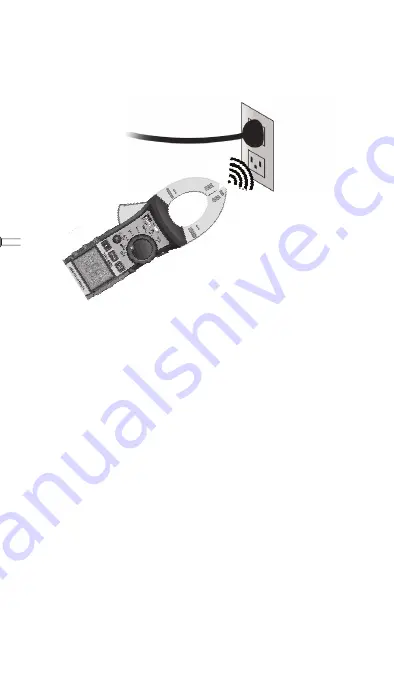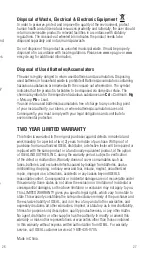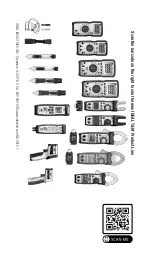
Meter Operation
12
13
WARNING:
Arc Flash and Shock Hazard, Proper PPE Required.
Follow all safety procedures, wear proper PPE in accordance to NFPA 70E and
follow the guidelines below and the instructions in this manual when operating
the meter with TL-757 Test Leads or equivalent. Test Leads must be rated for the
electrical environment the meter is being used in and have a voltage rating of at
least the voltage of the circuit to be measured. Failure to comply can result in
serious injury or death.
• Choking Hazard, Small Parts. Keep Away from
.
Children. Sharp Objects
Hazard, This is not a toy. It is not for use or play by children. Keep Away
from Children. Failure to do so can result in serious injury.
WARNING:
1. Use only approved test leads. Do not use improvised connections that could
present a safety hazard.
2. Never measure AC or DC current while the test leads are inserted into the input
jacks.
3. Prior to using the test leads, inspect them carefully for damaged insulation,
exposed metal or bent probes. Check test leads for continuity. Do not use leads
if they appear damaged.
4. When using the probes, keep fingers behind the finger guards on the probes.
5. Connect the common test lead before connecting the live test lead. When
disconnecting test leads, disconnect the live test lead first.
6. Always ensure that test leads are secured so that they cannot be accidentally
snagged or tripped over.
This meter is intended for use with the IDEAL TL-757 lead set (provided with this
product) or equivalent. The lead set must comply with requirements for Overvoltage
and Measurement Categories CAT IV 600V CAT III 1000V CAT II 1000V.
Non-Contact Voltage Sensing
First, rotate the function key to the
NCV
position. Place the jaw tip marked with
NCV close to an AC outlet (or any AC conductor such as light switches or power
cords) and scan back and forth across the outlet. Red indicator LED flashes at a
frequency of 3Hz, and the buzzer beeps at a frequency of 3Hz simultaneously if live
voltage is greater than 40VAC (50~60Hz) is detected. To differentiate between hot
and neutral in an outlet, place the NCV tab directly next to each slot in the outlet.
The tone (buzzer) will sound over the slot that is energized and not on the neutral
slot. Either test lead can also be used to differentiate between the hot and neutral.
Plug the red or black test lead into the V input jack on the meter. With the function
switch in the NCV position, insert the probe end of just one probe into the slots on
the outlet. The meter will beep and the Red LED will flash when a hot conductor is
contacted.
NOTES:
While the NCV is a helpful function, it is ALWAYS RECOMMENDED
that the operator verify that any electrical conductor is completely de-
energized and that no voltage is present by measuring for voltage AND
CONFIRMING THAT NO VOLTAGE IS PRESENT and that all applicable
PPE and lock out tag out procedures be followed before attempting any
work on ANY electrical distribution system.
Voltages with frequencies higher than 60Hz or electrostatic charges
may also be detected by the NCV sensing antenna.
Protective Cap
Guard Ring
CAT III 1000V, CAT IV 600V (with cap on)
WARNING:
To prevent possible electrical shock or personal injury, the
protective caps must be in place when operating a properly rated electrical meter/
tester using the TL-757 Test Leads in a CAT IV 600V or CAT III 1000V environment.
Содержание 61-737
Страница 9: ...8 9 3 4 1 12 6 7 11 10 8 13 2 5 14 ols 15 9 ...
Страница 29: ...Manual de Operación y Seguridad de la Pinza Amperimétrica de 400 Amperios CA 61 737 IDEAL Prueba y Medición ...
Страница 37: ...3 6 3 7 3 4 1 12 6 7 11 10 8 13 2 5 14 15 9 ...
Страница 57: ...61 737 Manuel d utilisation et de sécurité de la Pince Ampèremétrique 400 A CA Essai et mesure IDEAL ...
Страница 65: ...64 65 3 4 1 12 6 7 11 10 8 13 2 5 14 A 15 9 ...














































